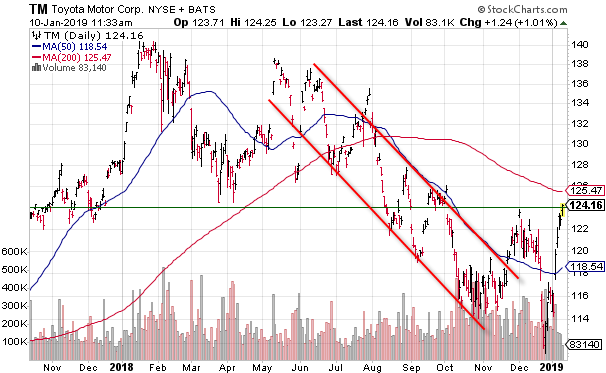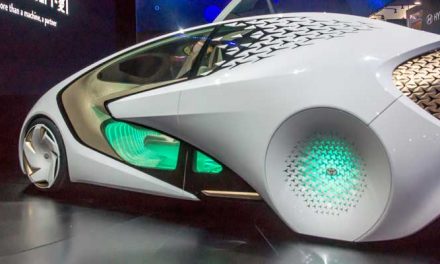The combustion engine is dying.
As regular Banyan Hill and Bold Profits readers, you and I know this. General Motors, Ford, Toyota … all the world’s automakers know this.
The proof is in the rise of Tesla and the shift toward electric vehicles at every major automaker on the planet.
Gasoline is running out of gas.
But the road toward filling our national highways and interstates with electric vehicles is a bumpy one. Few things on this planet hold the same return on energy storage as oil and gasoline.
This is the crux of the problem: energy storage. If the switch were as simple as popping a few AA batteries in your car, the combustion engine would have died out decades ago. But current-generation batteries just don’t measure up to the demands of the U.S. driver.
Tesla electric vehicles (EVs) top out near 330 miles per charge on a good day, whereas my family car can nearly double that on a full tank of gas.
And I can “recharge” my car in a matter of minutes, compared to the 30 minutes to several hours it takes to get a meaningful recharge on current electric vehicles.
Most American drivers could easily get by in their day-to-day lives with current-generation electric vehicles. However, the stigma of running out of “gas” and being stranded is a major deterrent for the EV market.
What’s more, driving from Cincinnati to Milwaukee to see Aunt Martha is already an all-day event. We don’t need a multihour layover to recharge the car.
By now, you get the point. Battery technology is the biggest speed bump in the way of lining U.S. interstates with miles of EVs. Crack the battery code, and the multibillion-dollar EV market is yours for the taking!
As an investor, you need to be invested in the company that cracks the battery code.
As of now, there isn’t a single company that has broken down the battery barrier. However, there is one company with a massive competitive edge … and it isn’t Tesla.
Oh, What a Feeling!
“We don’t see another way to get there without solid-state technology,” said Ted Miller, senior manager of energy storage strategy and research at Ford. “What I can’t predict right now is who is going to commercialize it.”
The above quote from Miller comes from a Bloomberg article on reinventing the battery for EVs.
Solid-state batteries are the wave of the future. They lack the flammable liquids that make EVs dangerous in a crash and make their batteries large, heavy and unwieldy.
The important part of Miller’s statement is the second half of the quote: Who is going to commercialize it?
The company with the biggest lead in potential commercialization right now is Toyota Motor Corp. (NYSE: TM).
Toyota has long led the market in hybrid-electric vehicles, bringing the first of such cars to market seven years ago in 2012. Since the Prius’ launch, Toyota has expanded that technology into every vehicle it makes, leaving the rest of the market to follow its lead.
The company is on the verge of repeating this event with solid-state batteries for EVs.
Currently, Toyota is one of only a handful of companies (and the only publicly traded company) with a working prototype solid-state battery capable of powering an EV. The current prototype is only capable of propelling a one-person vehicle across a parking lot, but it’s more than most other competitors can boast about.
Currently, Toyota plans on testing a consumer version of a solid-state-battery-powered EV by 2020. Only Germany-based Daimler AG and privately held Fisker have similar timelines.
What’s more, Toyota holds at least 233 patents and applications concerning solid-state battery technology. That’s roughly triple its nearest competitor!
And Toyota is investing heavily in the technology, spending 1.5 trillion yen ($13.9 billion) in its battery business. Commercialization by 2020 doesn’t seem like such a long shot with this kind of muscle backing Toyota’s push.
Investing in Toyota Motors
Before we get to the current state of Toyota stock, let’s take a quick look at the potential solid-state battery market.
In 2017, current-generation lithium-ion batteries generated 44 gigawatt-hours of power for EVs. That demand is expected to surge to more than 1,500 gigawatt-hours per year by 2030.
According to UBS Group, the current EV battery market is worth about $23 billion. UBS projects that to grow to more than $84 billion by 2025.
And that’s just EV applications. The total battery market, once solid-state batteries reach consumer-level application, could be much, much more valuable.
That’s why investing in TM stock right now is a good idea.
The shares had a rough 2018, it’s true. Last year’s blow-off in January set the shares back, while the tariff situation in the U.S. sent TM stock into a down-trending channel for the last half of the year.

As you can see from the chart above, however, that down-trending channel has finally been broken.
TM stock was on the verge of resuming its former long-term uptrend when market volatility spiked at the beginning of 2019.
That volatility has since settled down, and TM is breaking out above key support and resistance levels. The only hurdle left is the stock’s 200-day moving average, and then it’s back to the rally.
Until next time, good trading!
Regards,

Joseph Hargett
Research Analyst, Banyan Hill Publishing









